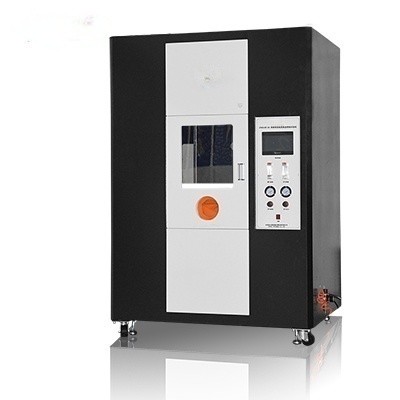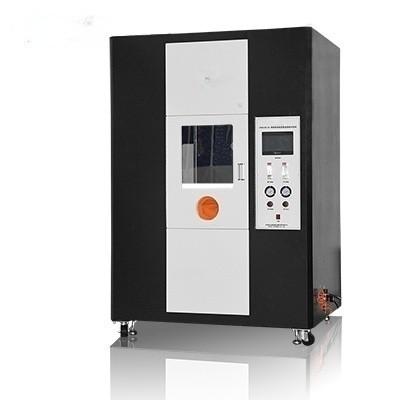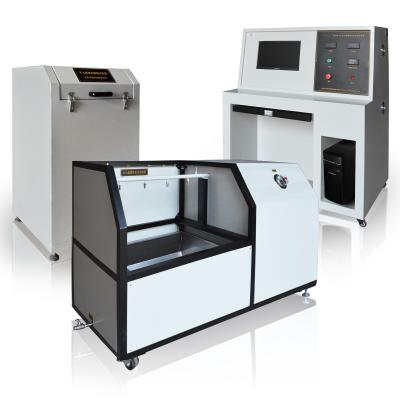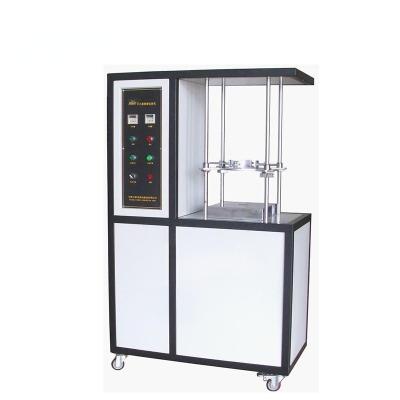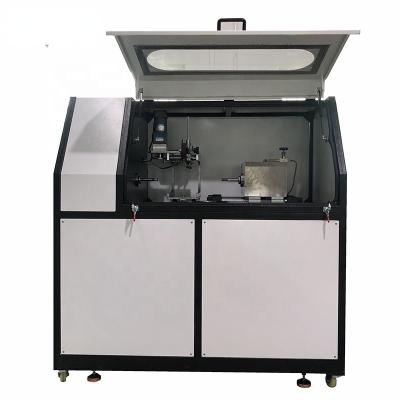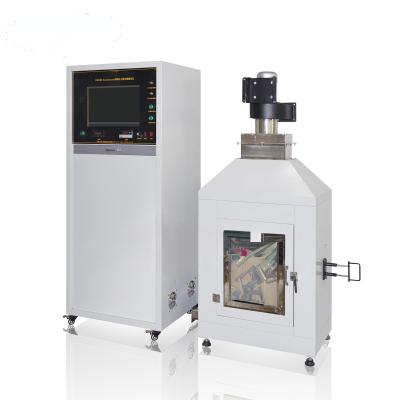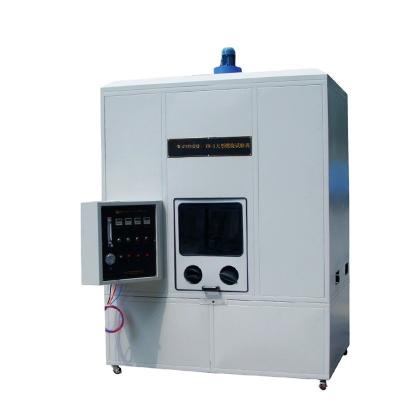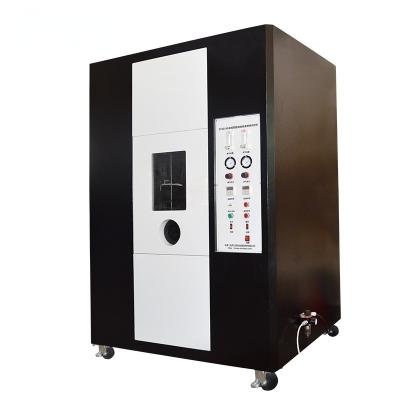In the dynamic realm of research and development, especially in fields related to materials science, engineering, and fire safety, the need for precise and versatile fire behavior testing devices is insatiable. The Customized Fire Behavior Testing Devices for Research and Development are crafted to meet the exacting demands of scientists and engineers, providing them with the tools necessary to explore the uncharted territories of fire behavior and blaze new trails in fire safety technology.
These state-of-the-art testing devices are designed to dissect and analyze the intricate fire behavior characteristics of a vast spectrum of materials, substances, and prototypes. They serve as the cornerstone for academic institutions, corporate R&D centers, and research laboratories engaged in the quest to understand the fundamental mechanisms of ignition, combustion, flame propagation, heat release, smoke and toxic gas generation, and the structural integrity of materials under the duress of fire. The overarching purpose is to generate data that fuels the development of novel fire-resistant materials, the refinement of existing fire safety standards, and the innovation of cutting-edge fire suppression and prevention technologies.
- Advanced and Modular Architecture
- The testing devices are constructed with a modular framework, allowing for seamless customization and expansion. The core structure is fabricated from high-strength alloys, engineered to withstand the extreme temperatures and mechanical stresses associated with intense fire testing. The interior chambers are lined with interchangeable refractory materials, tailored to specific research requirements. For instance, one can choose from a variety of ceramics or advanced composites, each offering distinct thermal and chemical resistance properties. The access doors and observation ports are crafted from multi-layered heat-resistant glass and high-tech sealing mechanisms, ensuring a controlled and secure testing environment. The modular design further enables the effortless integration of additional sensors, actuators, and testing modules as research objectives evolve.
- Ultra-Precision Temperature and Flame Manipulation
- Temperature Control: These devices offer unprecedented temperature control precision, spanning from sub-ambient temperatures (-100°C) to scorching highs of 2500°C, with an accuracy of ±0.5°C. This remarkable range and accuracy are achieved through a combination of cryogenic cooling systems, state-of-the-art heating elements like graphite or tungsten heaters, and a highly sophisticated feedback control loop. Multiple high-resolution thermocouples and infrared temperature sensors are strategically positioned to provide real-time, three-dimensional temperature mapping within the chamber. The control software empowers researchers to create complex temperature profiles, including rapid thermal cycling, precise isothermal holds, and custom temperature gradients, mimicking a vast array of real-world and theoretical fire scenarios.
- Flame Generation and Control: The flame generation and control systems are a marvel of engineering. They can produce flames with adjustable intensities, from a faint, laminar flame for delicate ignition studies to a powerful, supersonic jet flame for simulating extreme fire conditions. The fuel supply is highly versatile, accommodating a wide range of combustible gases, liquids, and even solid fuels. The fuel flow and air-fuel mixture are precisely regulated using advanced mass flow controllers and computer-controlled valves. The air supply can be conditioned to vary parameters such as humidity, oxygen concentration, and flow velocity, enabling the exploration of the effects of different atmospheric conditions on flame behavior. Additionally, the flame can be precisely positioned and oriented within the chamber, facilitating detailed studies of flame interaction with test samples.
- Cutting-Edge Instrumentation and Data Acquisition
- The devices are equipped with a state-of-the-art suite of sensors and measurement devices. In addition to ultra-sensitive temperature and flame sensors, they incorporate advanced optical spectrometers for detailed analysis of flame chemistry and radiation characteristics. High-resolution smoke particle analyzers, based on laser scattering and diffraction techniques, can measure the size, shape, and concentration of smoke particles with sub-micron precision. Gas chromatography-mass spectrometry (GC-MS) and Fourier-transform infrared spectroscopy (FTIR) systems are integrated for comprehensive analysis of the chemical composition of gases emitted during combustion. These sensors are interfaced with a high-speed, high-capacity data acquisition and storage system that can record data at rates exceeding 25,000 samples per second. The collected data is processed in real-time using advanced data analytics software, which provides instant visualizations, statistical analysis, and correlation studies. The system also allows for seamless integration with external data analysis and simulation tools, facilitating in-depth research and model validation.
- Versatile and Adaptive Testing Modes
- The testing devices offer a cornucopia of testing modes that can be tailored to the specific whims and fancies of research projects. They can perform standard fire tests such as horizontal and vertical flame spread tests, cone calorimeter tests, and fire resistance tests. However, they also enable more avant-garde and unique testing scenarios, such as the study of fire behavior in microgravity environments (using specialized microgravity simulation chambers), the evaluation of fire suppression effectiveness of new agents and systems, and the investigation of the long-term thermal degradation of materials over extended periods. The devices can be configured to test samples of various sizes and geometries, from microscopic specimens to full-scale prototypes. They also allow for the simultaneous testing of multiple samples under different conditions, enabling comparative studies and the optimization of experimental design.
- Seamless Integration with Research Ecosystem
- The Customized Fire Behavior Testing Devices are designed to integrate effortlessly with other research tools and software. They can be connected to computer-aided design (CAD) and computer-aided engineering (CAE) systems, allowing researchers to directly import and test virtual prototypes. The data generated by the devices can be exported in various formats for use in finite element analysis (FEA) and computational fluid dynamics (CFD) simulations, enabling the validation and refinement of theoretical models. It also supports remote access and control, allowing researchers to conduct experiments and monitor results from anywhere in the world. This integration capability greatly enhances the efficiency and productivity of research and development efforts, promoting interdisciplinary collaboration and knowledge sharing.
- Chamber Size and Capacity
- The devices are available in a diverse range of chamber sizes to accommodate the eclectic needs of research. Smaller chambers may have interior dimensions of 0.2 meters x 0.2 meters x 0.2 meters, suitable for microscopic and small-scale sample testing. Medium-sized chambers can measure 0.5 meters x 0.5 meters x 0.5 meters, providing space for testing larger samples or a limited number of small prototypes. Larger chambers, with dimensions exceeding 1.5 meters x 1.5 meters x 1.5 meters, are ideal for full-scale prototype testing and complex experimental setups. The interior volume and shape are optimized for efficient heat transfer, gas flow, and sample exposure, with adjustable baffles and flow guides to ensure uniform testing conditions.
- Temperature Range and Accuracy
- As mentioned, the temperature can be controlled from -100°C to 2500°C, with an accuracy of ±0.5°C. The temperature ramp rate can be adjusted from 0.1°C per minute to 1000°C per minute, allowing for extremely slow and rapid temperature changes. This wide range and precise control enable the study of a vast spectrum of thermal phenomena, from the glass transition and melting of materials to the vaporization and pyrolysis processes at high temperatures.
- Flame Intensity and Control Parameters
- The flame intensity can be adjusted over a vast range, with a maximum heat output equivalent to tens of megawatts per square meter. The fuel flow rate can be varied from a few microliters per minute to several liters per minute, and the air-fuel ratio can be precisely controlled within a range of 1:0.1 to 50:1. The flame can be adjusted in terms of velocity, turbulence, and shape, allowing for the simulation of different types of flames, from a slow, laminar diffusion flame to a highly turbulent premixed flame.
- Data Acquisition Rate and Resolution
- The data acquisition system samples sensor data at a rate of 25,000 samples per second. The temperature sensor has a resolution of 0.01°C, the smoke particle analyzer can detect particles as small as 0.01 micrometers, and the gas analysis systems have sensitivities in the parts per billion (ppb) range for many key compounds. This high-resolution and high-speed data capture ensure that the devices provide the most detailed and accurate information about the fire behavior of the tested materials and systems.
- Compatibility with Research Standards and Protocols
- The devices are designed to comply with a wide range of international and national research standards and protocols. They can be configured to meet the requirements of ASTM (American Society for Testing and Materials), ISO (International Organization for Standardization), and other relevant standards for fire testing. Additionally, they can be adapted to follow custom research protocols developed by individual institutions or research projects, ensuring their flexibility and applicability in diverse research contexts.
- In-depth Fire Behavior Analysis
- The primary function of these testing devices is to provide a highly accurate and detailed understanding of the fire behavior of materials and systems. By precisely controlling temperature, flame characteristics, and environmental conditions, they allow researchers to study the fundamental mechanisms of ignition, combustion, and heat transfer. For example, they can help determine the activation energy for a material's ignition, the rate of heat release during combustion, and the role of different chemical components in flame propagation. This knowledge is essential for developing new theories and models in fire science and for optimizing the fire performance of materials and products.
- Material and Technology Development
- Through comprehensive fire behavior evaluation, the devices enable the development of new fire-resistant materials and technologies. Researchers can test the effectiveness of different additives, coatings, and composite structures in reducing flammability and improving fire resistance. For instance, it can be used to evaluate the performance of new fire-retardant polymers, innovative insulation materials, or advanced fire suppression systems. By providing detailed performance data, the devices guide the selection and optimization of materials and technologies, leading to the creation of safer and more efficient products.
- Research on Fire Suppression and Prevention
- The devices are also invaluable for studying fire suppression and prevention strategies. It can be used to test the effectiveness of different fire suppressants, such as water mist, chemical agents, and inert gases, under various fire conditions. Researchers can analyze the interaction between suppressants and flames, measure the reduction in heat release and smoke production, and evaluate the impact on the surrounding environment. This research helps in the development of more effective fire suppression systems and the improvement of fire prevention strategies in various settings, from buildings and industrial facilities to transportation and aerospace applications.
- Knowledge Advancement and Standard Setting
- By generating a wealth of accurate and reliable data, the devices contribute to the advancement of fire safety knowledge. This data can be used to refine existing fire safety standards and develop new ones. It also provides a basis for interdisciplinary research, combining fire science with materials science, chemistry, physics, and engineering. The results of research using this equipment can have far-reaching implications, influencing building codes, product regulations, and emergency response procedures, ultimately leading to a safer society.
- Rigorous Manufacturing and Assembly
- The fire behavior testing devices for research and development are manufactured under the strictest quality control standards. Each component, from the precision sensors and high-power heaters to the complex control systems and chamber construction, is sourced from top-tier suppliers and undergoes extensive quality inspections. The assembly process is carried out by highly skilled technicians in a cleanroom environment to ensure the integrity and reliability of the equipment. Before shipment, the equipment undergoes a comprehensive calibration and validation process, using traceable reference standards and advanced testing procedures.
- Continuous Quality Monitoring and Upgrades
- The equipment is equipped with built-in self-diagnostic and monitoring systems that continuously check the performance of all components. Any deviations from the specified performance parameters are immediately flagged and reported. The manufacturer provides regular software and firmware updates to improve the equipment's functionality, enhance data analysis capabilities, and address any emerging issues. Additionally, a team of dedicated engineers is available for on-site maintenance, calibration, and troubleshooting, ensuring that the equipment remains in optimal working condition throughout its lifespan.
- Certification and Validation by Independent Authorities
Our equipment has obtained relevant quality certifications and has been validated by independent research and testing laboratories. It has been proven to provide accurate and reliable test results, conforming to the highest industry standards. We also actively participate in international research collaborations and standardization committees to ensure that our equipment remains at the forefront of technological innovation and compliance.
- Materials Science Research
- A research team in a leading university used the Customized Fire Behavior Testing Devices to study the fire behavior of a new class of nanocomposites. By precisely controlling the temperature and flame conditions, they were able to observe the unique thermal degradation and flame retardant mechanisms of these materials. The results led to the development of a new formulation of nanocomposites with significantly improved fire resistance, which has potential applications in aerospace and automotive industries.
- Fire Suppressant Development
- A chemical company used the equipment to test a new fire suppressant agent. They were able to measure the agent's effectiveness in suppressing different types of flames and analyze its impact on smoke and toxic gas production. Based on the test results, they optimized the formulation of the suppressant, which is now being evaluated for use in industrial fire protection systems.
- Aerospace Research
- An aerospace research institute tested the fire performance of new lightweight materials for aircraft interiors. The equipment allowed them to simulate the extreme temperature and pressure conditions that might occur during a flight. The data obtained helped them select the most suitable materials that meet both weight and fire safety requirements, contributing to the development of safer and more fuel-efficient aircraft.
- Building Materials Innovation
- A construction materials manufacturer used the equipment to evaluate the fire resistance of a new type of concrete. They studied the effect of different additives and curing methods on the concrete's ability to withstand high temperatures. The research led to the production of a high-performance fire-resistant concrete that can be used in the construction of fire-rated walls and structures.



- Pre-Sales Technical Consultation
Our team of experienced research and development fire safety experts provides in-depth technical consultations to help customers understand the capabilities and potential applications of the Customized Fire Behavior Testing Devices. We offer demonstrations and training sessions, tailored to the specific research interests and requirements of each customer. We also assist in designing experimental setups and selecting the appropriate accessories and sensors to ensure optimal results.
- After-Sales Service and Maintenance
We offer comprehensive after-sales service, including on-site installation and commissioning. Our technicians are available for regular maintenance, calibration, and emergency repairs. We provide spare parts and upgrades to keep the equipment at the cutting edge of technology. We also offer service contracts that include preventive maintenance, priority technical support, and access to our online knowledge base and user community, ensuring the long-term success of our customers' research and development projects.
- Training and Technical Support
We conduct regular training programs for new users and refresher courses for experienced researchers. These programs cover equipment operation, data analysis, and experimental design. Our technical support team is available 24/7 to answer questions, provide troubleshooting assistance, and offer guidance on optimizing experimental procedures and data interpretation. We also provide software updates and support for the data acquisition and analysis systems, enabling our customers to stay at the forefront of fire safety research.
The Customized Fire Behavior Testing Devices for Research and Development are an essential tool for any organization or institution dedicated to advancing fire safety knowledge and developing innovative fire-resistant technologies. If you are engaged in research and development in the field of fire safety, this equipment offers the precision, versatility, and reliability you need to achieve your goals. Contact us today to learn more and get a customized quotation. Let us help you unlock the full potential of your fire safety research and development efforts





